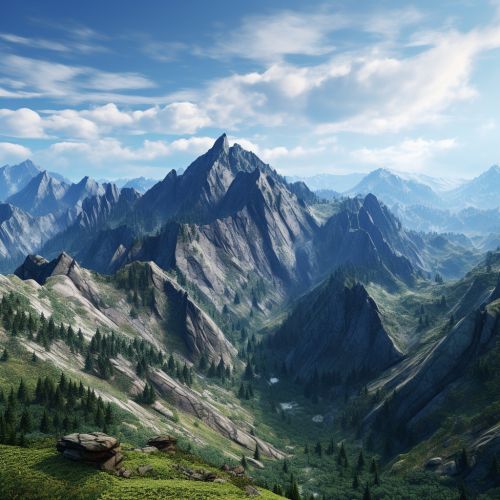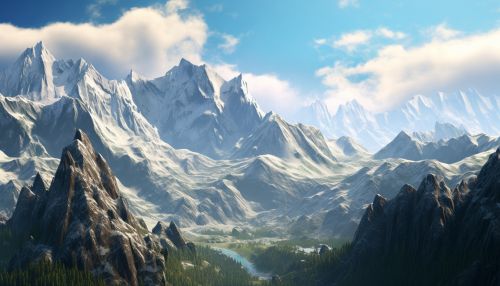Mountain Formation
Introduction
Mountain formation refers to the geological processes that underlie the formation of mountains. These processes are associated with large-scale movements of the earth's crust (tectonic plates). The formation of mountains is not a singular event in geological time but a process that affects all scales of geological time and space.


Tectonic Processes
Tectonic processes are the key drivers of mountain formation. These processes involve the movement and interaction of the earth's tectonic plates. There are three main types of tectonic processes that result in the formation of mountains: folding, faulting, and volcanic activity.
Folding
Folding is a tectonic process that occurs when compressional forces act on the earth's crust, causing it to buckle and fold. This process is responsible for the formation of some of the world's largest mountain ranges, such as the Himalayas and the Alps. The process of folding involves the deformation of rock layers due to stress. This deformation can result in the formation of anticlines (upward folds) and synclines (downward folds).
Faulting
Faulting is another tectonic process that leads to mountain formation. This process involves the fracturing of the earth's crust and the displacement of blocks of rock along a fault line. There are three main types of faults: normal faults, reverse faults, and strike-slip faults. Normal and reverse faults can lead to the formation of mountains. In the case of normal faults, tensional forces pull the crust apart, causing blocks of rock to drop down relative to adjacent blocks. In contrast, compressional forces in reverse faults push blocks of rock upwards, leading to the formation of mountain ranges.
Volcanic Activity
Volcanic activity is the third main tectonic process that leads to mountain formation. This process involves the eruption of magma from the earth's mantle to the surface, leading to the formation of volcanoes. Over time, repeated volcanic eruptions can result in the formation of a mountain. Examples of mountains formed through volcanic activity include Mount Fuji in Japan and Mount St. Helens in the United States.
Erosional Processes
In addition to tectonic processes, erosional processes also play a crucial role in mountain formation. These processes involve the wearing away of the earth's surface by natural agents such as water, wind, and ice. Erosional processes can shape mountains by carving out valleys and creating distinctive features such as peaks and ridges.
Glacial Erosion
Glacial erosion is a type of erosional process that involves the movement of glaciers. As glaciers move, they erode the underlying rock, carving out U-shaped valleys and sharp peaks. This process is responsible for the formation of many of the world's most iconic mountain landscapes, such as the Yosemite Valley in the United States.
Fluvial Erosion
Fluvial erosion involves the action of running water on the earth's surface. Rivers and streams can carve out valleys and gorges in mountainous regions, contributing to their formation and shaping. Over time, fluvial erosion can lead to the formation of distinctive mountain features such as V-shaped valleys.
Mountain Types
Mountains can be classified into different types based on their formation processes. The main types of mountains are fold mountains, fault-block mountains, and volcanic mountains.
Fold Mountains
Fold mountains are formed through the process of folding. They are the most common type of mountains and are typically found in regions where two or more tectonic plates collide. Examples of fold mountains include the Himalayas, the Alps, and the Rocky Mountains.
Fault-Block Mountains
Fault-block mountains are formed through the process of faulting. They are typically found in regions where the earth's crust is being pulled apart, such as the Great Basin region in the United States. Examples of fault-block mountains include the Sierra Nevada and the Harz in Germany.
Volcanic Mountains
Volcanic mountains are formed through volcanic activity. They are typically found in regions where there is thinning or fracturing of the earth's crust, such as along tectonic plate boundaries. Examples of volcanic mountains include Mount Fuji and Mount St. Helens.
Conclusion
Mountain formation is a complex process that involves a range of geological processes, from tectonic activity to erosional processes. The study of mountain formation provides valuable insights into the earth's geological history and the dynamic nature of our planet.
